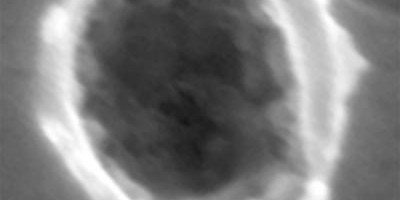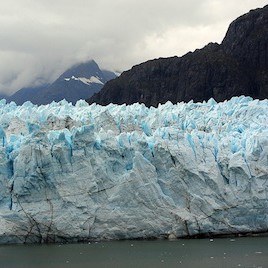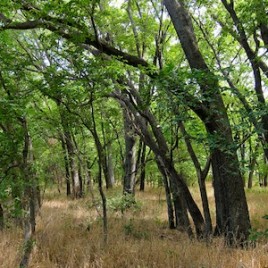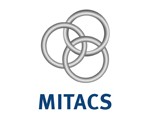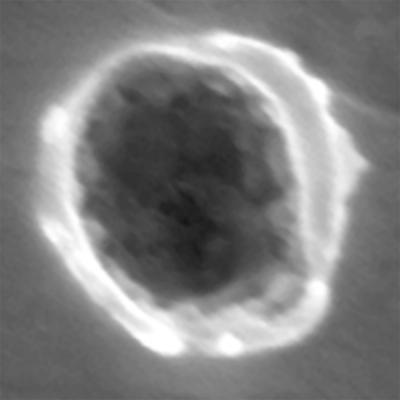
This crater, about 280 nanometres across, is one of the tracks left behind by pieces of interstellar debris that hit aluminum foil in NASA’s Stardust probe. Other particles, captured in an aerogel, were found by an army of volunteer ‘citizen scientists.’ The composition of the particles is consistent with the theory that they are ejected by stars and left to float around in the vastness of space. (Photo credit: Rhonda Stroud, Naval Research Laboratory)
Particles discovered by volunteers sifting through photos from NASA’s Stardust spacecraft are very likely dust from the vast space between stars, according to a new paper. The particles were collected by exposing a soft absorbent material called an aerogel to the vastness of space.
When the spacecraft returned to earth, the aerogel was photographed under a microscope and the pictures distributed to an army of volunteers who looked for tracks made by impacting particles. Most were debris from the spacecraft itself, but in 2010, researchers reported that Bruce Hudson of Midland, Ontario had found two very promising specimens.
The latest paper reports that the composition of these particles, along with five others, is consistent with what scientists expect interstellar dust to look like, though there is much more variety among them than previously thought.
Original research paper published in the journal Science on August 14, 2014.
Names and affiliations of selected authors
